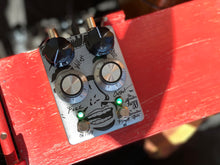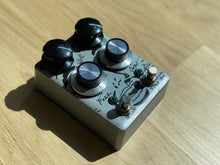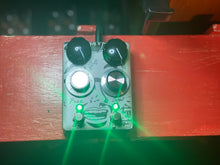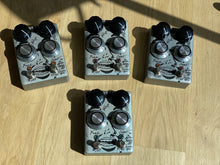Whether it be the result of heavy rain, unintentional blunt force impact, or simply recording equipment malfunction, the origins of Fuzz may be concretely traced back as early as 1960, to a Nashville recording session where mixing engineer Glenn Snoddy set out designing a circuit to faithfully recreate the unexpectedly glorious sound of a blown transformer in an audio recording console. When Keith Richards discovered the effect, first utilizing it on the Rolling Stone’s 1965 smash hit “(I Can’t Get No) Satisfaction,” it inspired an avalanche of innovation at the dawn of standalone electronic effects, attracting the curious ambition of musical pioneering characters, Ivor Arbiter, Gary Hurst, and of course, the legendary Roger Mayer.
The Aviator Fuzz propels this spirit of innovation further into the future... Inspired by the audaciously bombastic sonic footprints of Psychedelic Rock n’ Roll’s pioneering giants, this Octave-Fuzz effect exists in the space between the achievements of the past, and the promise of the future... As with all Quarantine Effects USA designs, The Aviator Fuzz boasts an uncommonly high headroom circuit, which (in the case of The Aviator Fuzz) may be tuned to taste by adjusting the unit’s Voltage knob, allowing the player to faithfully recreate the sound and feel of a dying (or sagging) 9V battery at will; an historically desirable (and for good reason- ask Eric Johnson!) tonal texture, when employed with a vintage-style fuzz circuit. In homage to the counter-culturally provocative sounds of the 1960’s, the Aviator Fuzz boasts a Dual Channel (fully analog and true bypass) design, transporting you from dynamic electro-mechanical fuzzy dream, to mile-high jet engine scream in an instant. Plant yourself firmly in the present and soar into the future’s past... Let your imagination take flight with the Aviator Fuzz. Designed and hand built by Guitarist/Engineer, Reeve Carney right here in New York, New York.







